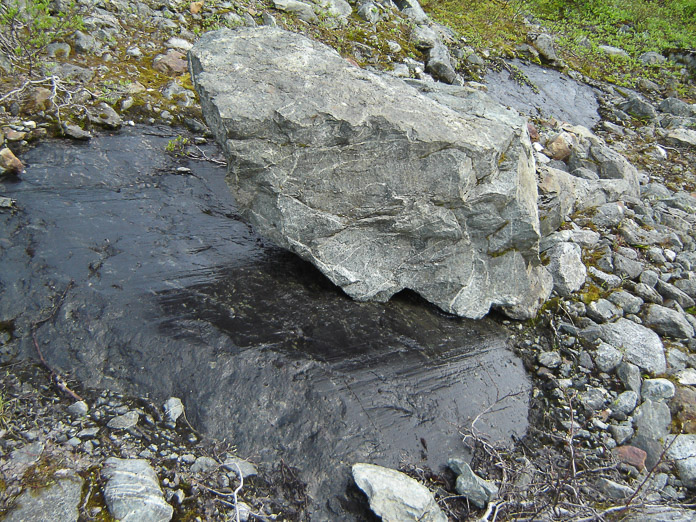- Todas
- Tierra salvaje
- Glaciares
- Fauna
- Pueblos
- Postales

¿Quién ha hecho esos arañazos en la roca? ¿Ha sido ESA piedra, arrastrada por el glaciar? Le perdonamos por pensar de esa forma; después de todo, esa fue la primera impresión del fotógrafo, y tiene una maestría en geología glacial. Los glaciares transportan fragmentos de roca de dos maneras: en su parte inferior y en su parte superior. Las piedras del fondo, arañan la roca madre, y a su vez son rayadas por ella; con lo que sus laterales se lijan hasta convertirse en superficies muy lisas. Las rocas de la parte superior del glaciar, se descomponen en fragmentos afilados, a consecuencia de la congelación y descongelación alterna del agua de sus grietas. Esta piedra tiene bastantes aristas afiladas y ninguna superficie lisa; por lo que fue arrastrada por el glaciar, y las rocas así transportadas, no pueden rayar la roca subyacente. A pesar de las apariencias iniciales, ¡esta roca es inocente!
Who carved those scratches into the bedrock? Was it THAT rock, carried by the glacier? You may be forgiven for thinking so; after all, that was the photographer’s initial opinion and he has a master’s degree in glacial geology! Glaciers carry rock fragments in two locations: at the bottom of the glacier and on top of the glacier. Rocks at the bottom scratch the bedrock and in turn are scratched by it; thus they have their sides sanded down to quite smooth surfaces. Rocks on top of the glacier are broken into sharp-edged fragments by water alternately freezing and thawing within their cracks. This boulder has many sharp-edged sides and no smooth surfaces; hence it was carried upon the glacier and rocks carried that way cannot scratch the underlying bedrock. Despite initial appearances, this rock is innocent! Photographer: Richard Becker